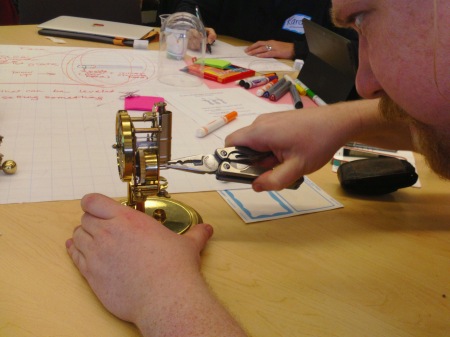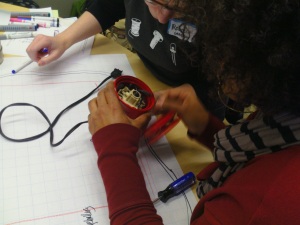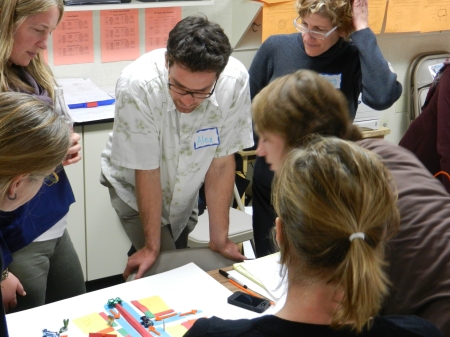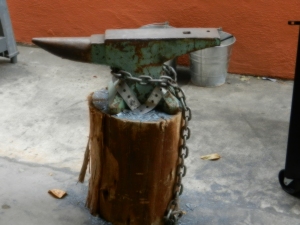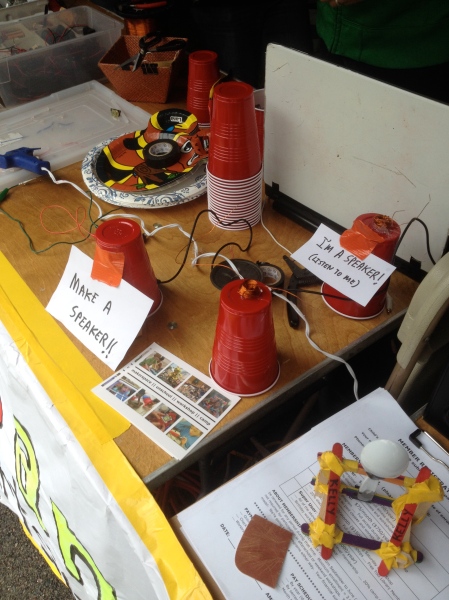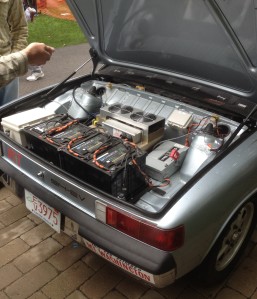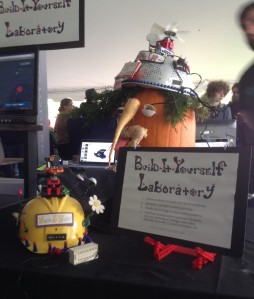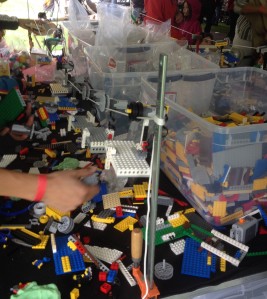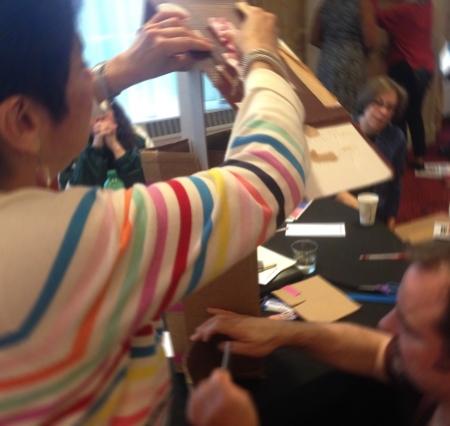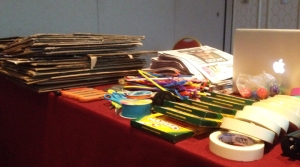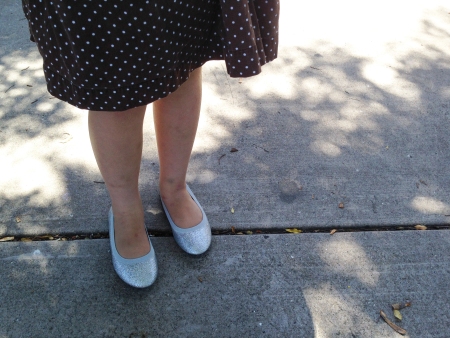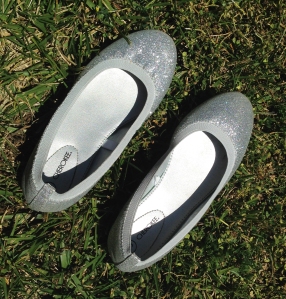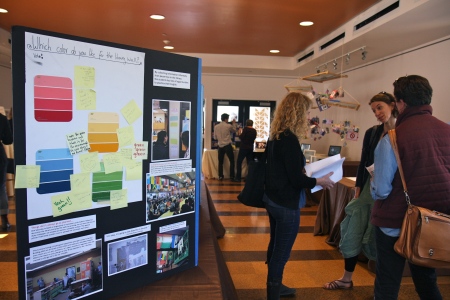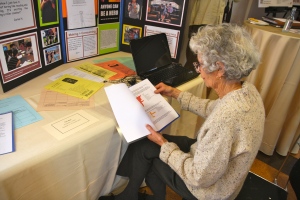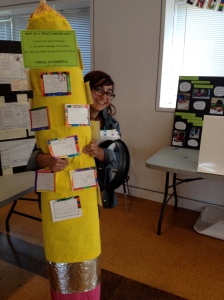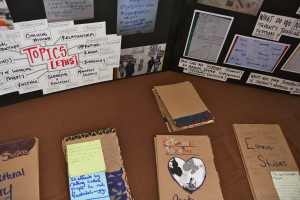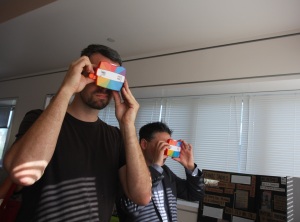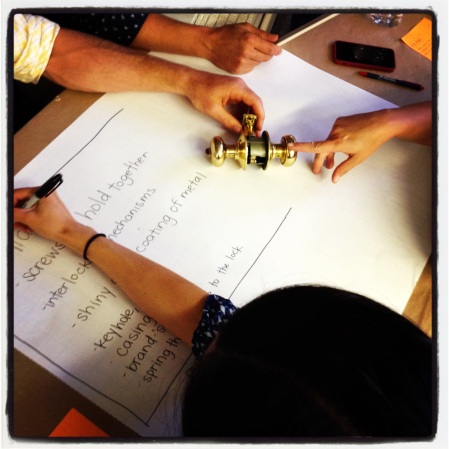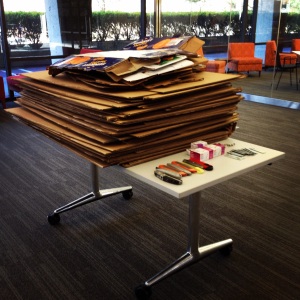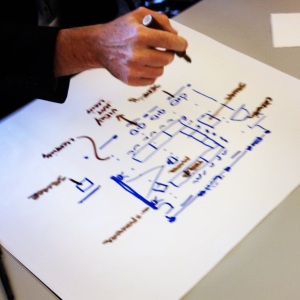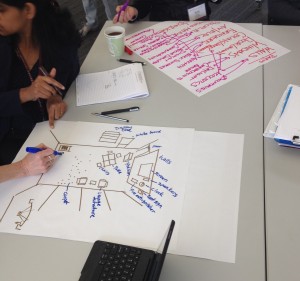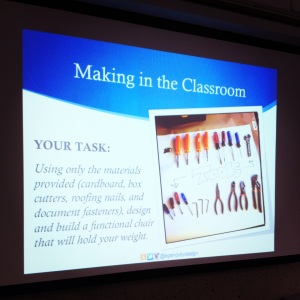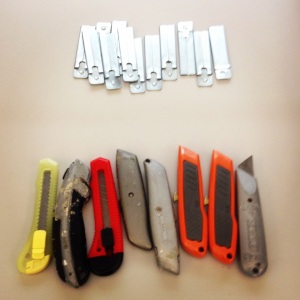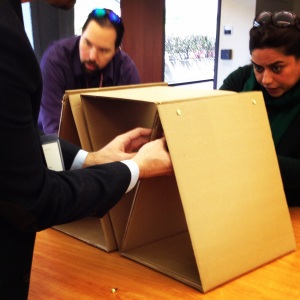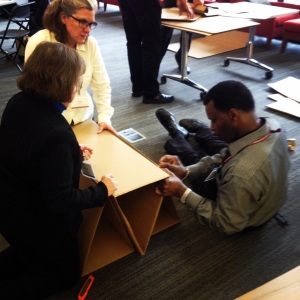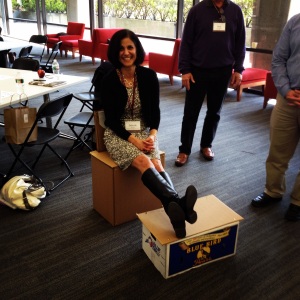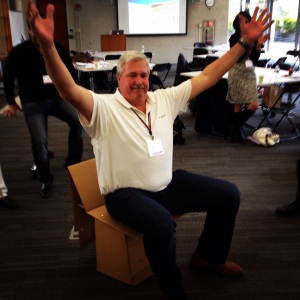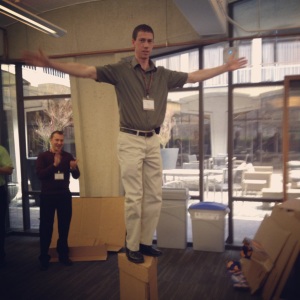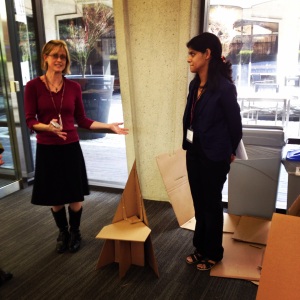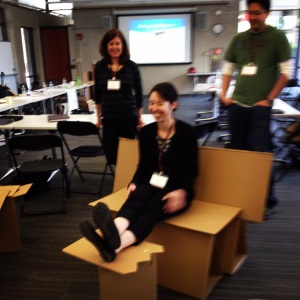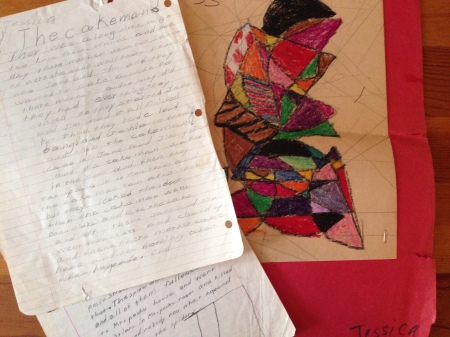
As maker-education initiatives expand, how can we think differently about documenting student work? Pictured above, abstract art and creative writing samples from Jessica Ross’s “portfolio” of work, saved by her mother.
If you know where to look around my mother’s house, you can find a carefully curated collection of items that I made throughout my life. These artifacts represent my dabbling, over the years, in a wide range of media. There are watercolors, primitive looking sketches, creative writing samples, some black and white photos that are the result of an undergrad arts requirement, and my Mom’s favorite: a ceramic blueberry pie with the unique feature of a removable lid, crafted at Miquon Day Camp the summer that I was seven years-old.
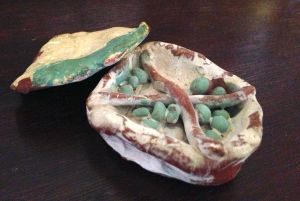
The coveted Ceramic Blueberry Pie (with removable cover) from the Jessica Ross collection.
Aside from having a good laugh with my mom every few years over why she keeps these items, I hadn’t given them much thought until this past year.
What Advice Can We Offer Young Makers as they Document their Making throughout their Lifetimes?
As maker education experiences begin to expand in schools and after-school settings, there is a great deal to think about when we consider how young makers might document and share their work beyond the front of the family fridge. Some questions to consider include:
How can a young maker’s portfolio show process as well as product? How can the portrayal of a young maker’s work reflect his/her learning? What can a portfolio demonstrate about a young maker’s identity/identities? Who owns a young maker’s documentation? How can technology influence the portfolio process? What might be the role of the educator in building a young maker’s portfolio?
An invitation to think about these questions came early in 2014 from a collaborative initiative called, the Open Portfolio Project. The Agency by Design team was contacted by Kylie Peppler—the director of the Creativity Labs at Indiana University Bloomington—on behalf of the Project, to see if we would be willing to join their National Working Group; we immediately said, “yes.”
First, Some Background
As stated on its website, the Open Portfolio Project “aims to develop a common set of practices for portfolio creation, reflection, sharing, assessment, and technology solutions to create an open, decentralized, and distributed lifetime portfolio system for makers.” Supported by the Gordon and Betty Moore Foundation, the project brings together the Maker Education Initiative and Indiana University’s Creativity Labs. Through a literature review, surveys and interviews with makers, visits to maker spaces, and research into learner documentation, the team hopes to make recommendations to the field about possible design features for maker portfolios. In addition to building on the longstanding traditions of portfolio assessment in the arts and other disciplines, timely encouragement came from the announcement from MIT that they will be accepting maker portfolios as a part of their admissions application.
There was no doubt that the overall goals of the Open Portfolio Project were beautifully synergistic with the work of AbD. Project Zero has a long history of looking at student work and understanding portfolio practice. As far back as 1988, The Apple Project set out to learn more about three questions:
- What are effective ways of assessing student performances and project work?
- How can a child’s work on a series of projects be documented and assessed fairly?
- What is required to implement portfolio assessment in a school so that it will “take root” and serve as an ongoing tool for the evaluation of programs as well as children?
These and similarly related questions have been revisited over the years by many Project Zero researchers in both arts and non-arts related contexts.
The broad spectrum of making processes and products, the ubiquity of digital documentation tools, and our inability to know what the future of learning will look like makes this an expansive possibility space to explore.
Conversations with the National Working Group have helped us to look anew at portfolio practices. Portfolio considerations of audience and purpose get bumped up when you move from analog to digital portfolios—and the shelf life and audience increase exponentially, as well. The dichotomy of school-based computer policies versus out-of-school online behaviors has been debated in the tech-ed sphere for years. The Children’s Online Privacy Protection Act has to be considered when documenting work in a maker program for children under the age of 13.
Debate over the assessment of portfolios has raged on just about as long as all other assessment debates—and will likely continue to rage on. Coupled with the assessment debate is the role of standards and decisions about which literacies to measure. The maker ethos of collaborative work calls for collaborative documentation. The interdisciplinary, emergent set of skills and competencies—as-yet-undefined boundaries of making (which is what attracts many to the term)—adds a new layer of complexity to portfolio design. Exciting stuff! Continue reading →
 After nearly 40,000 page views generated from over 30 blog posts written over the past two years, Making Thinking Happen is moving from this blog space to our new home on the brand new Agency by Design website. We look forward to your continued readership, support, and wonderful comments at www.agencybydesign.org.
After nearly 40,000 page views generated from over 30 blog posts written over the past two years, Making Thinking Happen is moving from this blog space to our new home on the brand new Agency by Design website. We look forward to your continued readership, support, and wonderful comments at www.agencybydesign.org.
